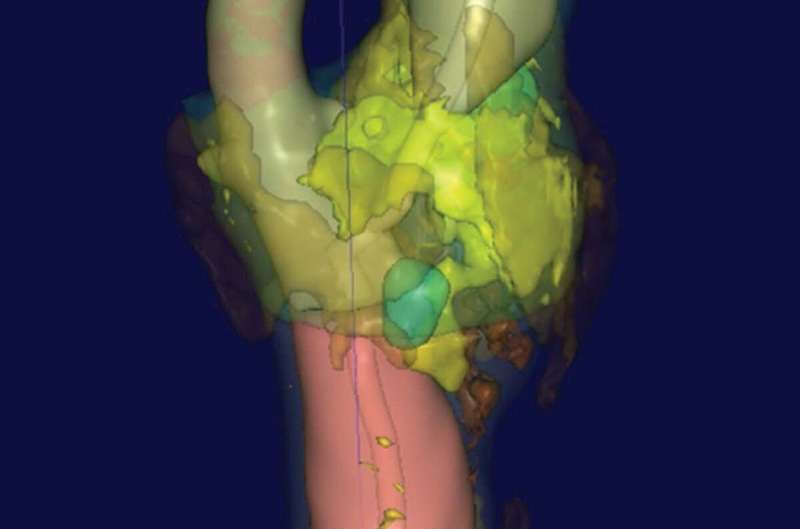ATVB cover. Credit: Buckler et al
Patients with atherosclerosis today usually receive preventive treatment only after a heart attack or stroke because diagnostic methods that can identify individuals and atherosclerotic plaques with high-risk are lacking. In addition, the choice of treatment, both surgical and medical, is based on large patient studies and the possibilities for individualizing treatment are small.
In a recent study published in Arteriosclerosis, Thrombosis and Vascular Biology, Andrew Buckler, Ph.D. student in Ulf Hedin's research group Vascular Surgery, Department of Molecular Medicine and Surgery, used a software (vascuCAP; Elucidbio.com) for morphological analysis of atherosclerotic plaques in the carotid artery (carotid stenosis) in computed tomography scans from patients treated with stroke-preventive surgery, where the removed plaques have been recovered for molecular analyzes with mapping of gene expression and biological processes.
The study compared how structural and morphological plaque components corresponded with gene expression for biological processes related to high or low risk. Through mathematical prediction modeling with data from 44 patients, we were then able to show how the analysis of plaque morphology with the software could predict biological processes and gene expression in 4 independent patients. Overall, the study shows that morphological plaque analysis of computed tomography images can provide better opportunities to identify atherosclerosis in the carotid artery with a high risk of stroke. The study also opens up opportunities for individualized therapy where dominant biological processes can guide the choice of medical therapy.
More information: Andrew J. Buckler et al. Virtual Transcriptomics, Arteriosclerosis, Thrombosis, and Vascular Biology (2021). DOI: 10.1161/ATVBAHA.121.315969
Congqing Wu et al. Predicting Gene Expression From Computed Tomography Angiography, Arteriosclerosis, Thrombosis, and Vascular Biology (2021). DOI: 10.1161/ATVBAHA.121.316195
Journal information: Arteriosclerosis, Thrombosis and Vascular Biology
Provided by Karolinska Institutet
























